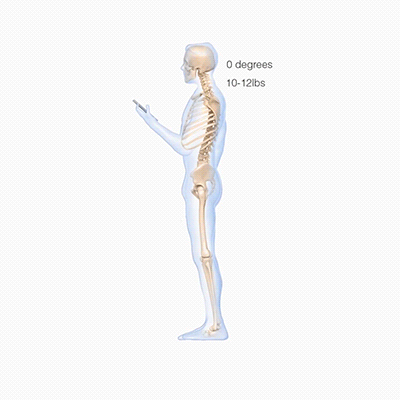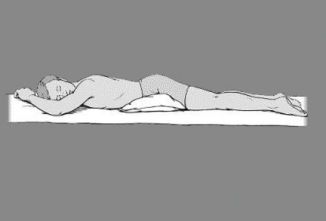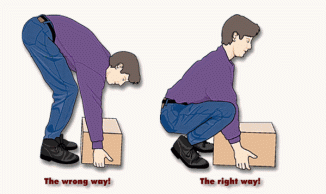
You ever wonder if your knees have it? Is pain in the knees or is knee pain a secondary thing which is being created from something else? Well, knowing the history and stresses of your knees, evaluating your posture and movement, evaluating x-rays or an MRI of a knee, as well as the positioning of your pelvis and low-back would be the best way to start determining where the pain is coming from. The knee joint is comprised of the ends of the femur and tibia coming together. The anterior and posterior cruciate ligaments connect the femur and tibia in the interior or middle of the joint and the collateral ligaments on the inside and outside of the knee, also called medial and lateral.
There are also meniscus pads located inside the knee joint that the femur literally rides on when in contact with the tibia. Each of these structures can cause pain if damaged. If there is stress on these structures caused by an imbalance in the body at the knee, or in the pelvis, or low back you can get pain as well. Start by getting checked by a chiropractor. They’ll let you know if your knees have it.
Category Archives: Uncategorized
Walking in Circles

People always tell me they have a short leg. I say, “have you broken one of them?” Usually the reply is no. There is no reason to have a short leg unless you have broken or fractured a leg and it didn’t heal at the same length. Of course there are congenital reasons or things you are born with, but they are rare. When a person lays down on the table with their face down you can usually see a leg length difference. Does everyone have a short leg? No! The key is to bend the legs at the knee and see if the leg stays short or becomes longer. This tells me there is a rotation occurring in the pelvis, causing the legs to be different lengths. I once treated a guy who had one leg at least an inch short. I asked him if he walks in circles all the time. After I corrected his pelvis his legs were even and they stayed even after about four treatments. The only complaint he had was that he had to pay a tailor to hem all of his suit pants since one leg was short on every pair.
So, if you are walking in circles you’ll come to the same conclusion, get your pelvis adjusted.
It’s the fiddler
If the symmetry of the body is altered or the joints in the body are not moving like they are supposed to, you are more prone to injuries and joint damage. An analogy would be the alignment of your car’s tires that when misaligned will wear out quickly. In the body, muscle usage is supposed to be as symmetric as possible and both sides of the body must do their share of the work. If there is a difference in strength of one side of the back compared to the other or one arm/one leg compared to the other, you are setting yourself up for injury on the most used side. Somebody is not doing their share of the work! So, how can we correct this situation? Through chiropractic adjustments, stretching and specific types of strength training you can get your body back to symmetry and on the top of form and function. Remember, look to your most important piece of equipment , the fiddler, to make the most improvement in your sport.
6 serious chiropractic symptoms
There are many feelings you might experience throughout the day. Some are questionable feelings that could indicate that there is something wrong with your body’s structure. Here are six examples of when you are due for an adjustment.
1. PAIN. Pain while doing something you normally do. The area of pain is not always the area of the problem.
2. Numbness. Numbness occurs if there is compression on a nerve.
3. Weakness. Weakness usually comes after numbness. Unless you have injured some of your muscle tissue, you could be experiencing a prolonged nerve compression.
4. Range of Motion Limited. If you can’t move at your waist equally in opposite directions or move your head equally in opposite directions.
5. Soreness on ONE side. If you experience soreness on one side consistently after a workout or even while walking or sitting.(ie. one leg or one arm.)
6. Low Energy: If you just don’t feel right or your energy level is feeling lower than usual at the end of the day.
Icebergs and Chiropractic
So, where did that analogy come from? The idea is when you see an iceberg there is only about 30% of it visible above the water. The quote in my office says,”Symptoms are misleading, we find the hidden cause.” Typical questions in my office are,”my pain is in my low back, so why are you adjusting my neck,” or,”the pain is on the right, so why are you adjusting on the left.” The adjustment technique I use has a an entire analysis method of where the body needs the adjustment. It uses the tone of the body or tension which works on the level of the nervous system. To do it we look at the length of your legs while you are lying face down, which should be even unless you have had a broken a leg bone or as we call it, have an acquired short leg. What I look at is the functional short leg, which means your leg is shorter on one side because your skeleton is out of place or not positioned properly. With arm movements, head movements, or other body positions we are able to challenge areas of your spine. If your leg length changes in certain positions then that will correlate to a problem in a certain area of the spine. It is scientifically based and many scientific studies have been done to establish this evaluation method. It has been around since the 70’s and it is called Activator Method Chiropractic. Check it out on the web:
There are many techniques in chiropractic, but this one has allowed me to help many people. Thanks Activator!
Make sure your chiropractor looks for the hidden cause of your problem. Check out the website above for an Advanced Proficiency Activator Chiropractor near you.
Mineralize
 Mineralize! It sounds like energize doesn’t it. I’m a treky from way back. I remember when they shot the assist guy on the ground team and all that was left was cube of white stuff. I think that stuff was calcium and magnesium. Anyway, I just read an aged article from Vitamin Research News about Magnesium deficiency.
Mineralize! It sounds like energize doesn’t it. I’m a treky from way back. I remember when they shot the assist guy on the ground team and all that was left was cube of white stuff. I think that stuff was calcium and magnesium. Anyway, I just read an aged article from Vitamin Research News about Magnesium deficiency.
South, James MA: “Magnesium: The key to health and life,” Vitamin Research News. pages 1,2,3,&10.Volume 19, Number 5, June 2005.
Or just go to http://www.vrp.com and go to newsletter and then to newsletter archives.
The nickel tour of the article is magnesium deficiency is related to multiple chronic degenerative conditions like: chronic muscle tension, hypertension or high blood pressure, chronic fatigue, insulin resistance and type 2 diabetes, ADHD, ADD, colorectal cancer, etc.
Most people are chronically deficient in magnesium so it takes 1 to 6 months of supplementation to see gradual changes and a reversal of these conditions. The recommended dosages are 4.5 mg/lb. of body weight, so for a 200lb. person you need 900mg per day. You can break that up into 1-3 doses a day. The best forms to take are magnesium citrate. If it is taken with calcium there should be a 1:1 ratio or equal amounts of calcium and magnesium for best absorption in the body. So, for about $20 you can get a months supply and a side benefit is excellent sleep and more relaxation throughout the day. This may be a great tool in the battle of degeneration and aging. So mineralize and get your magnesium and calcium.
Are you ON?
This guy down the street from us has the best Christmas light show in town. He puts the movie, “Christmas Vacation” to shame. Here’s the (You Tube) link:
We were all wondering how they synchronize all those lights and all the different types of music. Computers right!
I wanted to link this concept to the body and chiropractic, so here it goes. Think how much communication goes on in the body between the brain and every cell in your body. All of the communication runs through the nervous system or the spinal cord and the nerves of the body. The brain coordinates all of that symphony of messages. What can happen is a nerve can get irritated or the messages can get interference from this nerve irritation. This happens in the spinal joints and other joints of the body. When a nerve gets irritated you generally feel pain first. If the irritation persists you get numbness and then weakness of the muscle groups associated with that nerve. The spinal nerve has a vast amount of functions, whether it be temperature control, touch sensation, nutrition, metabolism, even waste disposal. There are many functions that can be affected by nerve interference. Think of it as a dimmer switch on a light, more interference the more the dimmer switch is turned down for that nerve. Chiropractic adjustments keep the nerve interference away and the dimmer switch turned up. Make sure all your lights are on full blast with regular chiropractic adjustments. Are you ON!
Slipping and Falling
It’s funny when clowns do it, falling down that is. It’s not very funny when you do it. Have you ever been out to get the paper in slippers when there is a little bit of snow on the driveway? Slick, I tell ya. When body meets concrete the body’s integrity can be compromised. So, how can you prevent a fall?
- Watch your shoes. Leather soles or flat bottoms are slippery. Rubber soles with a tread pattern are best.
- Watch where you walk. Painted concrete surfaces, driveways where there is a change in slope on the sidewalk, snow or ice over dirt paths, and especially stairs are some of the most hazardous areas for slip and falls.
- Throw some salt or at least dirt on that ice. If it doesn’t melt it all the way, it will make the surface rougher and better for traction.
What happens if you fall. First, make sure everything is moving in the right spots without pain. Watch for areas that move that shouldn’t. There is usually a lot of pain associated with odd movement especially if there is a broken bone. If there is too much pain to move or bear weight, you better make a visit to the local emergency room, better sooner that later. If there is still some nagging pain or the pain moves to other areas of the body, your body is probably out of alignment. See your chiropractor at the minimum and get your body aligned so you don’t have any problems from the fall in the future. I hope you all only have to think about slipping and falling as a reference to gas prices.
Poof! Pillows
My pillow is too soft, was the first thought I had this morning. It is hard to know what is the best pillow to use. Some like goose down, some like fiber-fill, some like contoured foam. Like I said, there are a lot of choices so it is hard to know what’s best. I’ve tried everything, even the water filled, bean-filled, air-filled, foam-filled, etc. I always gravitate back to the fiber-filled. They come in different thicknesses depending on the way you sleep. The firmer thicker ones usually are for side sleepers. Typically the companies that sell pillows tell you on the outside what type of sleeper the pillow is for. The problem with pillows is they wear out. I replace mine every 2-3 months.
Position-wise, you should always be as symmetric as possible, with your head anyway. So, lying on your side, your nose should line up with the middle of your chest.
Back Sleeper:
Pillows under the knees helps reduce stress in the low-back.
Belly Sleeper:
The same thing, a pillow placed below the abdomen can reduce back stress in this position.
Overall, finding the best position to spend 6-8 hours a night can really help you to feel better throughout the rest of the day. Get chiropractic adjustments, get your sleep position right, and get the right pillow position and POOF! into it.
Ergonomics is Economics
It is amazing how far we have come isn’t it? What’s ergonomic? It is the position you put your body in that puts the least amount of stress on the body while working or doing repetitive tasks. The quote, “He who will not economize will have to agonize.”-sums it up. You have to conserve and minimize the use of certain muscle groups in the body. For example: If you continue to lift things just by bending forward and picking them up, eventually your back muscles will let you know you are doing it wrong. Lifting with your back straight and using your upper legs is much more economical and is less likely to cause injury in the long term.
Another place where people get into trouble is sitting at a desk or work station. Typically, you shouldn’t feel discomfort or strain while sitting or standing without movement. All items should be easily within reach and you shouldn’t have to strain to get to something you use a lot, like the phone or keyboard.
Texting and Phone reading is hard on your neck as well.

So, minimize stresses, economize movement, create health in your life, and get adjusted.










